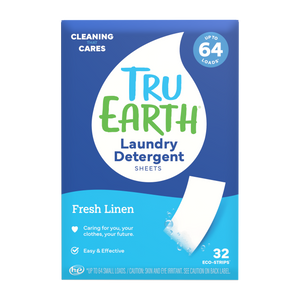When it comes to our beloved bathing suits, proper care is essential to ensure they last through countless summers and beach adventures. Hand washing your bathing suits is gentle on the fabric and an eco-friendly choice now that they will be packed away until next summer.
In this informative guide, we'll walk you through the step-by-step process of washing your bathing suits by hand, preserving their vibrant colors and elasticity for seasons to come.

Assessing Your Bathing Suit
Before you begin the washing process, assess the type of bathing suit you have. Different fabrics and embellishments may require specific care instructions. Understanding your swimwear's unique characteristics is key to treating it appropriately.
Check for Stubborn Stains and Issues
Examine your bathing suit meticulously for any visible stains, areas of wear and tear, or loose threads that need special attention before washing. Identifying these issues early on will help you address them effectively.
Gathering Your Supplies
Selecting the proper detergent is key to preserving your bathing suit's integrity. Opt for a mild detergent specially designed for delicate fabrics. This choice will ensure your swimwear is cleaned without causing fading or damage.
Prepare a Clean Basin or Sink
Use a clean and sanitized basin or sink free of any residues from cleaning products. Keeping this environment pristine will prevent unwanted contaminants from affecting your bathing suit.
Opt for Cold Water
When preparing your washing basin, fill it with cold water. Hot water can be detrimental to the elastic fibers of your bathing suit, potentially causing deformation over time. Cold water will protect your swimwear and maintain its elasticity.
Pre-Washing Preparations
Start by rinsing your bathing suit under cold, running water to initiate the washing process. This step will effectively remove any lingering sand, chlorine, or saltwater, preventing these substances from affecting your swimwear's condition.
Gentle Squeeze, Avoid Wrinkles
After rinsing, gently squeeze out excess water from your bathing suit. It's important to perform this step carefully, avoiding any wringing or twisting of the fabric. Handling your swimwear gently will prevent damage to its delicate fibers.
The Hand Washing Process
Now, it's time to create a soapy solution. Add a small amount of the mild detergent you selected earlier to the basin of cold water. Swirl the water gently to create a well-distributed soapy mixture.
Submerging Your Suit
Carefully submerge your bathing suit into the soapy water, ensuring it's evenly soaked. This step will allow the detergent to penetrate the fabric, effectively removing oils, lotions, and impurities.
Gentle Hand Washing
To address stained or soiled areas, gently agitate the bathing suit with the soapy water. Pay close attention to the affected areas, using your fingers to rub the fabric delicately. The goal is to lift any stubborn residues without causing harm to the material.
Soak and Break Down Residues
Allow your bathing suit to soak in the soapy water for 10-15 minutes. This soaking period will facilitate the breakdown of sunscreen, oils, and other residues that may have accumulated during your aquatic adventures.
Rinsing Your Bathing Suit
After the soaking period, it's time to rinse your bathing suit thoroughly under cold, running water. Ensure you rinse until all the soap is completely washed out of the fabric. This step is key to preventing soap residues from affecting your swimwear's texture.
Gently Squeeze Out Excess Water
Once rinsed, gently squeeze out any remaining water from your bathing suit. It's vital to avoid any wringing or twisting motions, as these can cause damage to the delicate fibers.
Removing Excess Water
Place your damp bathing suit flat on a clean, dry towel. Roll the towel and bathing suit together carefully to absorb excess water. This technique helps prevent stretching or misshaping that can occur with more aggressive drying methods.
Air Drying for Optimal Results
To complete the excess water removal process, hang your bathing suit on a plastic or wooden hanger to air dry. Avoid exposing it to direct sunlight, as prolonged sun exposure can lead to fading over time. Opting for air drying will help preserve the vibrant colors of your swimwear.
Addressing Lingering Stains and Spots
If you notice any lingering stains or spots after the initial wash and drying process, it's essential to address them promptly. Use a stain remover designed for delicate fabrics to treat these areas. Follow the product's instructions to lift the stains effectively.
Re-Washing Specific Areas
In cases where the stains persist, repeat the hand-washing process for the affected areas. Pay extra attention to gently agitate and rinse these spots until the stains are completely gone.
Adopting Preventive Measures
To maintain your bathing suit's pristine condition, it's advisable to rinse it thoroughly with cold water immediately after swimming. This practice will remove chlorine, salt, sunscreen stains, and other potential contaminants that may compromise the fabric over time.
Rotate Your Bathing Suits
To extend the lifespan of your swimwear collection, consider rotating between multiple bathing suits. Giving each one a break between wears allows the elastic fibers to recover and ensures even wear and tear.

Properly Storing Your Bathing Suit
Before storing your bathing suit, make sure it is completely dry. Moisture left in the fabric can lead to mold and mildew growth, potentially damaging your swimwear.
Store Separately
Keep your bathing suit in storage separate from other clothing items to avoid snagging or stretching. Opt for a dedicated storage area or container to keep your swimwear pristine.
Keeping Your Swimwear Fresh!
With careful attention and these detailed steps, washing your bathing suits by hand becomes a simple yet effective way to extend their lifespan and maintain their vibrant appearance.
By following these guidelines and implementing preventive measures, you'll be able to enjoy your favorite swimsuits for many sunny seasons to come.

